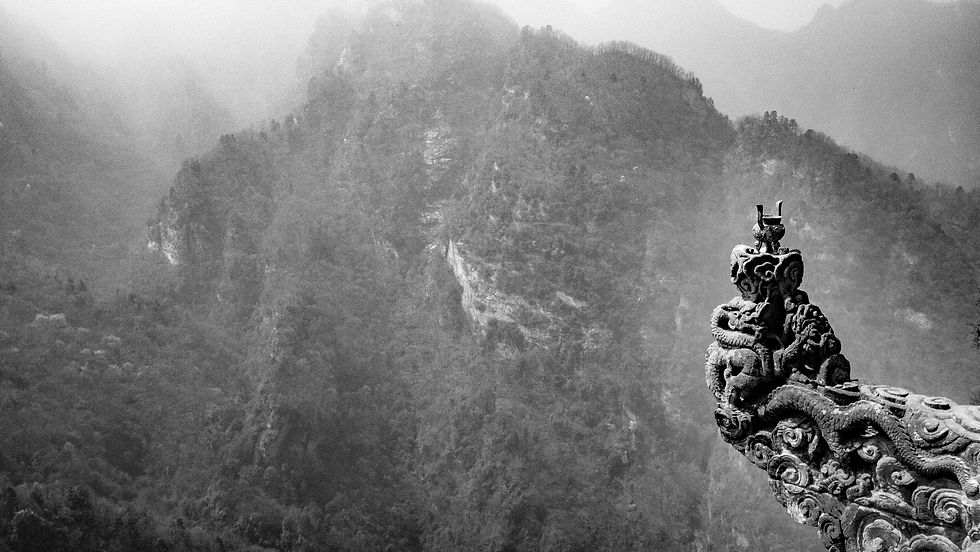The Masked King: Power, Love, and Baroque Echoes in a Venice Carnevale Dream 黑衣之王
- Robin Yong

- May 20
- 3 min read

Venice Carnevale is more than just a party; it's a theatrical spectacle where history, mythology, and personal fantasies collide. Within the labyrinthine streets and shimmering canals, masked figures become living embodiments of bygone eras, their costumes whispers of power struggles, unrequited love, and the enduring allure of the baroque. And amidst this swirling kaleidoscope of color and intrigue, the figure of a "King in Black Costume" holds a particular fascination, a potent symbol imbued with layers of meaning.
His presence, stark against the vibrant backdrop, immediately draws the eye. Black, the color of mourning and mystery, clashes with the lighthearted frivolity of the Carnevale, hinting at a deeper complexity. Is he a fallen ruler, stripped of his kingdom but clinging to the vestiges of his former glory? Or perhaps a powerful figure cloaking his identity, a puppeteer pulling strings from the shadows of the celebration?
The iconography of antique and baroque art often informs the King's attire. Think of the somber portraits of monarchs from the Habsburg era, their faces framed by elaborate lace collars and adorned with heavy jewels, each element a deliberate statement of authority. Our King in Black might echo this grand tradition, incorporating elements like:
Intricate embroidery: Gold or silver thread woven into complex patterns, mirroring the opulent textiles of the baroque court. These details speak to wealth and craftsmanship, hinting at a regal past.
A dramatic mask: Perhaps a Bauta, concealing his entire face and allowing him to observe the court below without judgment. Or a more elaborate mask, adorned with feathers, pearls, and dark, glittering beads, emphasizing the air of mystery and aristocratic distance.
The association with these historical periods doesn't only offer a visual spectacle, but also introduces themes of power and love, themes that are intrinsically linked with the Carnevale spirit. The King in Black might be a figure haunted by lost love, perhaps a Queen who succumbed to intrigue or met a tragic end. His black costume could be a constant reminder of his grief, a visual manifestation of the sorrow that weighs upon his crown.
Alternately, he could be a master manipulator, strategically using the anonymity of the Carnevale to pursue forbidden passions. The mask becomes a shield, allowing him to court a desired subject without revealing his true identity, a dangerous game of seduction played out under the watchful gaze of the Venetian moon.
The beauty of the Carnevale lies in its ambiguity. The King in Black is not simply a historical re-enactment; he's a canvas for personal interpretation, a symbol that can be moulded to reflect the wearer’s own inner landscape. He could represent the struggle between duty and desire, the weight of responsibility, or the enduring power of love and loss.
Ultimately, the King in Black Costume in Venice Carnevale serves as a potent reminder that even in the midst of revelry and disguise, deeper truths can be revealed. He is a walking allegory, a testament to the enduring power of imagery and the enduring fascination with the complexities of human nature. As he glides through the masked crowds, he invites us to question the masks we wear, the roles we play, and the passions that drive us all.

My Italian friend Massimo Fiordiponti in his black king costume.
And as usual, the portraits are just done on the busy streets of Venice and using natural lighting only...






When I sat down at the best stylist, I was nervous about changing my look. But the stylist’s expertise and assurance quickly made me feel excited instead of worried.
Smooth coordination and encouragement throughout made the trek suitable for all skill levels. Their energy lifted the group, bukit lawang jungle trekking especially during the more challenging climbs and river trails.
Platform gap injuries occur frequently when passengers rush to board trains. Running for a train accident lawyers understand the legal standards for safe platform-train interfaces. They investigate whether the gap was excessive or lacked proper warning systems.
Trained teams are usually involved, which ensures everything is done according to safety protocols. Do manufactured homes depreciate they bring the right tools and experience to complete the job efficiently. This kind of service can be a turning point, especially when someone is trying to improve the property or prepare it for sale.
However, hemp-derived versions containing THC exist in a federal gray area, though some states have banned them. Legal considerations surrounding liquid CBD with THC products remain complex and location dependent.